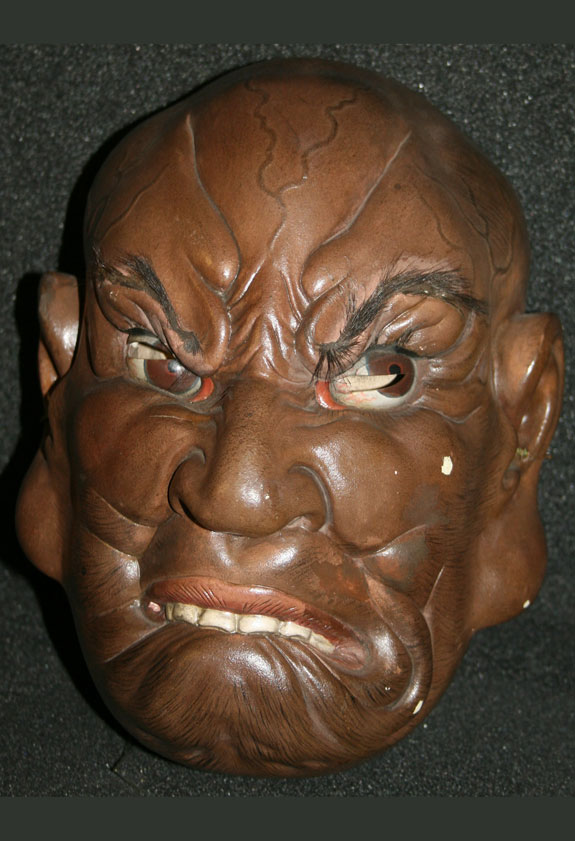 Q: I first came upon these while researching Noh masks in museums in Europe. I later discovered other examples mostly in association with Asian antique dealers and auction houses. They are frequently identified as “iki-ningyo” masks but are also identified incorrectly as noh or gigaku masks. Q: I first came upon these while researching Noh masks in museums in Europe. I later discovered other examples mostly in association with Asian antique dealers and auction houses. They are frequently identified as “iki-ningyo” masks but are also identified incorrectly as noh or gigaku masks.
I have tried to find these same sort of objects in Japan, through Japanese-language google searches and websites. No luck. The closest association (though still quite dissimilar) are iki-ningyo heads. No masks. There is a reference in Alan Scott Pate’s Japanese Dolls: The Fascinating World of Ningyo, but I can find no mention of masks.
My guess is that these types of works were produced mainly for foreign visitors (export) by Kansai-based doll makers during the Meiji and Taisho periods. They are simplified and/or miniaturized representations of iki-ningyo heads intended as souvenirs. It is 10 x 12 inches in size. 1062
A: Iki Ningyo (living doll), defined by their expressive and realistic features, were a phenomenon in Japan during the late Edo to Meiji periods, representing a novel approach to a centuries old tradition of doll and mask making. This one is a mask. The doll heads are much smaller. The larger masks are usually detailed with glass eyes, human hair, and a burnished gofun lacquer finish. I don’t think the large masks are ever worn, but they are very popular with collectors both in Japan and around the world. A |

